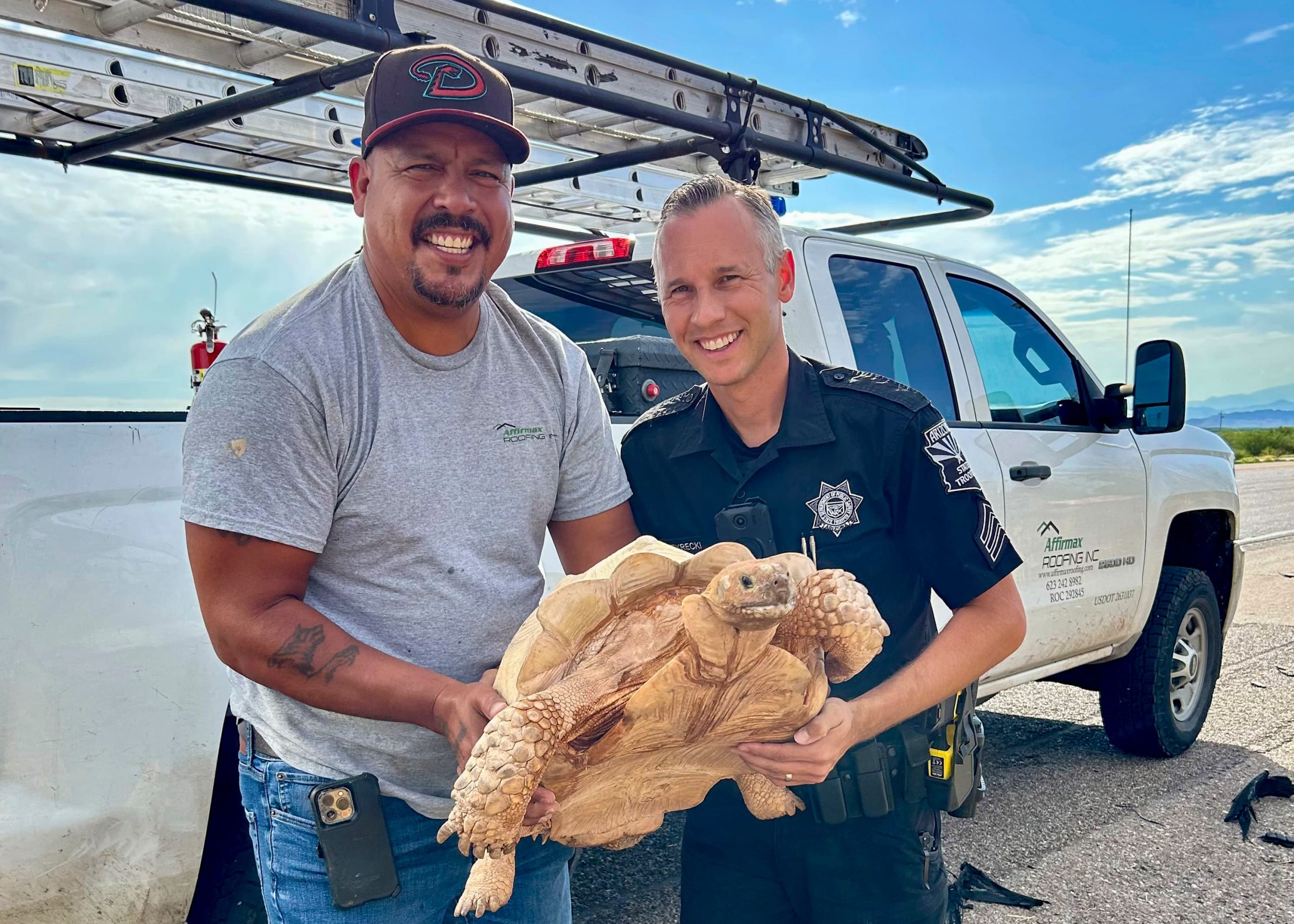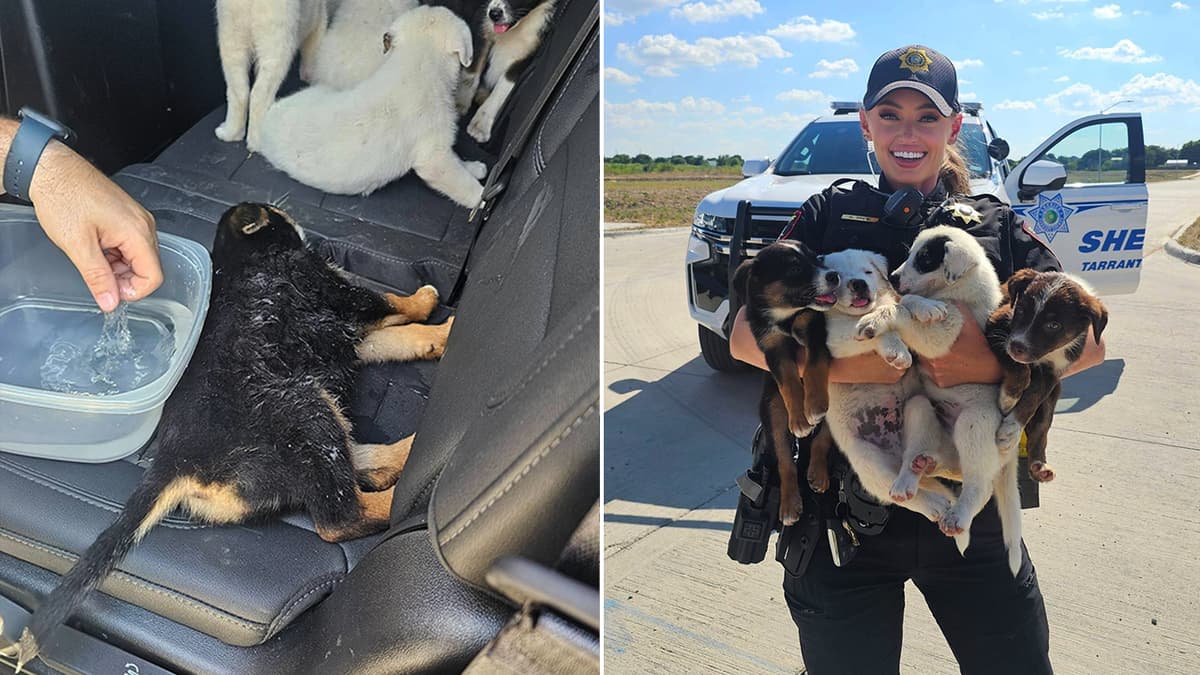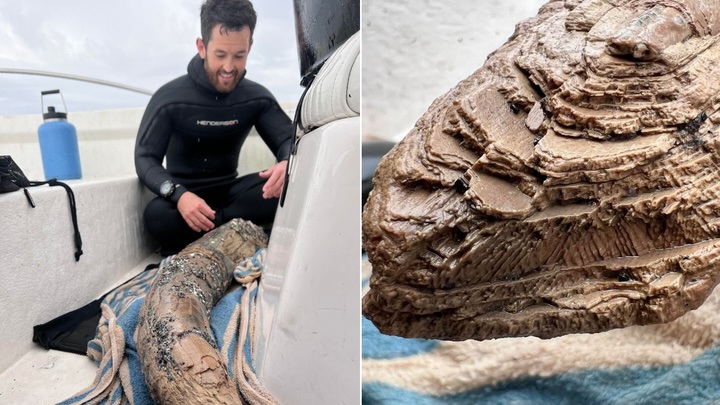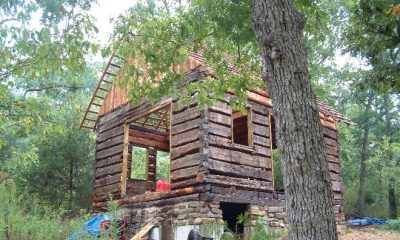
OMG
A Incredibly Speedy Kidney Delivery
A Lamborghini is supposed to be used as a race car. It is the ultimate design in vehicular mechanics and road-racing performance. That said, it’s not everyday one goes about driving 300 miles in just under two hours and it’s allowed.
The Italian police picked up their own copy of the Lamborghini Huracan in 2017. Italy is quite famous for some of its characters, and the police decided it made sense to have at least one vehicle that could keep up with an over-powered criminal in a very hot car. That said, that wasn’t the only purpose justifying the acquisition. When delivery of items or materials had to be done quickly, far faster than normal transport could provide, the Huracan was brought out. And that included transporting critical life-saving shipments as well. The vehicle was even fitted for refrigeration as a result.
Physically, the Italian police Lamborghini is by all respects a bona fide police vehicle. It is fitted with a light bar system, a full paint job and logo, and the inside is decked out with a police computer and radar tools for traffic enforcement.
In the latest major use of the vehicle, the Huracan was assigned for a fast delivery of a kidney. The distance was a long stretch, running from Rome all the way to Padua. The engine was more than up to the job. A V10 assembly easily capable of running at 145 mph without straining, the Huracan’s only major issue was the driver’s ability to control the car and other traffic being in the way. The second part was generally resolved with some flashing of the police lights and a bit of siren noise to wake up the sleepy truck driver or two.
Once arrived, the entire trip made for a very handy marketing event that the Italian police were quick to post online via Twitter, showcasing the entire affair and the vehicle as well. Driving from Rome to Padua basically totaled 489 kilometers (a smidge over 300 miles). Time wise, the police made the run in two hours with their Lamborghini, a trip that typically would take over five hours, even with a respectable vehicle at normal speeds.
There were other alternatives for the kidney transfer; Italy has plenty of its own helicopters, including the police agencies. However, the Huracan did prove its worth, and it gave the officers a chance to really put a 602 horsepower engine through its paces with full authorization.
The whole affair was quite operational and had no resemblance to a road rally. There were no crowds waiting at every turn or a track completely flagged with blaring horns and track lights. But as far as the doctors were concerned, there might as well have been because the kidney arrived in ample time, suffered no degeneration, and was implanted into the surgical patient successfully, likely saving another life. And that, ultimately meant everything that all the effort and resources could arguably be justified after all. But there’s no argument, the whole affair made for a good marketing for the Italian police as well.
OMG
Highway Adventure: Escaped Sulcata Tortoise’s Journey Halted by Arizona Rescuers

An unexpected traveler caused a stir on an Arizona interstate near Picacho when a large sulcata tortoise was discovered attempting to cross the highway. The tortoise, it was later revealed, had embarked on a remarkable journey after escaping from an ostrich ranch located approximately three miles away.
Sulcata tortoises, also known as African spurred tortoises, are native to the southern edge of the Sahara desert. These impressive reptiles are the third-largest species of tortoise in the world and the largest mainland tortoise. Known for their hardy nature and long lifespans, sulcata tortoises can live for over 70 years and reach weights of up to 200 pounds when fully grown.
The rescued tortoise’s adventure highlights the species’ surprising mobility and endurance. Despite their slow-moving reputation, sulcata tortoises are capable of covering significant distances, especially when seeking food or a mate. Their strong legs and sharp claws, evolved for digging in their native arid habitats, allow them to traverse challenging terrain – though perhaps not as safely as they might on the African plains.
Local authorities and wildlife experts were quick to respond to the unusual sight of this desert dweller on the interstate. The rescue operation not only ensured the tortoise’s safety but also prevented potential traffic hazards on the busy highway.
This incident serves as a reminder of the responsibilities that come with keeping exotic pets. Sulcata tortoises, while popular in the pet trade due to their docile nature and impressive size, require specialized care and secure enclosures to prevent escapes like this one.
The tortoise’s safe retrieval and its journey from an ostrich ranch to a major highway underscore the importance of proper animal husbandry and the unexpected challenges that can arise when managing diverse species in captivity. As the sulcata tortoise returns to more familiar surroundings, its brief highway adventure stands as a testament to the species’ resilience and the community’s quick action in wildlife preservation.
OMG
Dinner Cruise Turns Heroic: Lost Dog Rescued Miles from Florida Shore

An evening boat ride became an unexpected rescue mission when passengers and crew aboard the Sanibel Harbor Princess spotted a dog swimming alone in Florida’s waters. The canine, later identified as Ellie, was found over a mile from Fort Myers Beach on July 28, prompting a swift rescue operation.
Captain Terry Johns, a veteran of the Coast Guard, recounts the moment of discovery. Midway through the cruise, commotion erupted among guests as they noticed a small head bobbing in the water. Quick action was necessary, as Ellie was dangerously close to the boat’s rear.
With skilled maneuvering, the yacht’s crew positioned the vessel to safely retrieve Ellie. Once aboard, the exhausted but friendly dog was provided with food and water. The crew’s training proved invaluable in executing the rescue efficiently.
Post-rescue, Ellie was taken to a veterinarian for examination. Despite having a microchip, identification proved challenging due to malfunction. A crew member volunteered to care for Ellie temporarily while efforts to locate her owners continued.
The rescue story, broadcast by local news outlet WINK News, caught the attention of Ben and Kathleen Baker, Ellie’s distraught owners. The couple had lost sight of their pet during an afternoon boat outing and had spent hours searching to no avail.
Overcome with emotion, 72-year-old Ben Baker expressed his relief at seeing Ellie safe on the news. A few phone calls later, and the Bakers were reunited with their beloved pet, turning a potential tragedy into a heartwarming tale of community effort and canine resilience.
This incident highlights the importance of pet safety on boats and the impact of quick thinking and compassion in emergency situations.
OMG
Eight Puppies Rescued from Texas Heat Will Soon Be Ready for Adoption

Eight puppies left in the scorching Texas heat have been rescued and are now safe, thanks to some quick-thinking deputies and animal control officers.
The puppies were abandoned in a carrier on a field in Tarrant County, Texas, where temperatures reached over 100 degrees. The Tarrant County Sheriff’s Office shared this on their Facebook page.
A kind person found the puppies without any water and alerted the authorities. Unfortunately, since there were no cameras in the area, it’s unlikely they will find out who left the puppies behind.
Deputies Collin Stephenson and Haley Drew from the Tarrant County Sheriff’s Office, along with the Fort Worth Animal Care and Control team, rescued the puppies.
Fort Worth Animal Care and Control shared an update on Facebook, including photos of the puppies, saying, “The puppies that were rescued from a carrier in 100-degree weather by Tarrant County Sheriff’s Office are doing much better.”
The puppies, about six weeks old, are now at the Chuck & Brenda Silcox Animal Care and Adoption Center. They are believed to be shepherd mixes and have been given names after popular chip brands: Cheetos, Fritos, Ruffles, Lays Potato, Cheese Itz, Doritos, and Pringles.
Deputy Stephenson told Fort Worth Animal Care and Control that he plans to adopt one of the puppies.
The animal shelter is looking for people to foster or adopt the puppies, who should be ready for adoption next week.
Tips to Keep Your Pets Safe in the Heat
- Provide Plenty of Water: Always make sure your pets have access to fresh, cool water.
- Avoid Midday Heat: Walk your pets early in the morning or late in the evening when it’s cooler.
- Never Leave Pets in Cars: Cars can quickly become dangerously hot, even with windows cracked.
- Shade and Shelter: Ensure your pets have a shady place to rest if they’re outside.
- Watch for Signs of Overheating: Signs include excessive panting, drooling, and weakness. If you notice these, get your pet to a cool place and offer water.
- Limit Exercise: On very hot days, reduce the amount of exercise your pets get.
By following these tips, you can help keep your pets safe and healthy during the hot summer months.
OMG
Diver Makes Stunning Ancient Find Off Florida Coast: ‘Very Rare’

A diver in Florida recently made an incredible discovery while exploring the waters off the state’s coast.
Kyle Lundberg, who studied marine biology at the University of South Florida, was diving off Manasota Key, about 90 miles south of Tampa, when he stumbled upon an ancient mastodon tusk. He found this remarkable relic back in April while searching for fossils.
The tusk, which hasn’t been dated yet, could be millions of years old. Although he’s only 29 years old, Lundberg has been scuba diving for 12 years and has been hunting for fossils since he was “old enough to walk.”
“My dad would take us out to construction sites all the time to look for fossils as a kid,” Lundberg shared. He mentioned that while finding small pieces and chunks of tusk is common, discovering one as large and well-preserved as this is very rare. Tusks found in Florida are usually very delicate and often crumble apart.
According to the National Park Service (NPS), American mastodons went extinct around 10,500 years ago. Their fossils have been discovered across North America and Central America, from Alaska to Mexico. Despite what some people might think, mastodons are not the same as mammoths, though they are related and share a common ancestor with mammoths and elephants. Mastodons could grow as tall as 10 feet.
The NPS explains that while mastodons have been around since 4 to 3 million years ago, mammoths didn’t arrive in North America until much later, during the Pleistocene ice ages, which spanned from 2.6 million years ago to 11,700 years ago. Mastodons did live alongside mammoths in many areas, but all of these large creatures went extinct by about 10,500 years ago.
Lundberg has some advice for aspiring fossil hunters: remember to get a fossil permit. In Florida, these permits only cost five dollars each. “My best tip is to get out and explore and keep your head down,” he said. “This stuff is out there and all over the state.”
As for what will happen to the ancient mastodon tusk, Lundberg plans to keep it unless experts decide it is important enough to donate. “I plan on keeping it, but I do have to report it at the end of the year to the Florida Museum of Natural History,” he said. “If they deem it scientifically important, I have to donate it, but that is very unlikely.”
OMG
Daring Rescue: Duluth Firefighters Save Dog from Frigid Lake Superior

In a heart-pounding rescue mission on the shores of Duluth, Minnesota, a brave dog found himself in a perilous situation after leaping into the icy waters of Lake Superior. The daring rescue unfolded amidst eight-foot waves that crashed against the shore, creating a challenging environment for both man and canine.
The intense situation began when the adventurous dog managed to slip out of his leash, enticed by the allure of a chilly swim. Unbeknownst to the canine, Lake Superior’s vast expanse presented a danger he hadn’t anticipated. The situation quickly escalated, prompting the owner to dial emergency services.
To pinpoint the distressed dog’s location, dispatchers utilized cameras on a life bridge, offering a bird’s-eye view of the unfolding drama. The dog, buffeted by the relentless waves, struggled to stay afloat as firefighters donned specialized ice suits to brave the frigid waters.
These ice suits, designed for extreme cold-water rescues, provide a crucial barrier between the icy environment and the rescuers. Comprising layers of insulated materials, these suits not only keep firefighters warm but also offer buoyancy and protection against the harsh elements.
As the brave firefighters plunged into the turbulent waters, the dog faced the dual challenges of the waves and the numbing cold. Despite the difficult conditions, the rescue team, guided by the worried owner who remained on the shore, managed to locate the struggling canine.
The dog, large and frightened, repeatedly disappeared beneath the waves, making the rescue a daunting task. Through effective communication between the owner and the firefighters, the team successfully secured the dog by the collar, preventing him from slipping away.
Once the dog was safely in their grasp, both the firefighters and the canine were brought to safety aboard a waiting boat. The dog, now shivering and scared, received prompt medical attention. After warming up, the resilient pup even leaped happily into his owner’s car, a heartwarming conclusion to a potentially tragic event.
The Duluth Fire Department, often questioned about responding to animal-related emergencies, emphasized the significance of such actions in a Facebook post. They highlighted the deep bond between pets and their families, explaining that in their experience, if emergency responders did not intervene, well-meaning bystanders might take unnecessary risks.
The post also revealed a chilling detail: one of the dog’s owners had considered jumping into the treacherous waters. The fire department strongly discouraged such actions, emphasizing the importance of leaving water rescues to trained professionals equipped with the necessary gear.
“The Duluth Fire Department wants to stress to the public the importance of not putting yourself into a situation you are neither trained nor equipped to handle,” the post warned. “Given the wave and temperature conditions in the canal last night, anyone entering the water without the proper training and equipment would most likely have ended in tragedy.”
-

 OMG6 years ago
OMG6 years agoA Couple Gave Birth to the Most Beautiful Twins Ever
-

 OMG7 years ago
OMG7 years ago20 Rare Historical Photos
-

 OMG6 years ago
OMG6 years agoHilarious Airport Photos
-

 Cute6 years ago
Cute6 years agoMom Refuses to Let Daughter Eat Sugar and Years Later This is What She Grows Into
-

 OMG6 years ago
OMG6 years agoTop Secret Air Force One Facts That You Never Knew
-
OMG6 years ago
The Funniest Yearbook Photos Of All Time
-

 OMG6 years ago
OMG6 years agoRetired Mathematician Restores Log Cabin
-

 OMG5 years ago
OMG5 years agoWhat Happened When This ‘Duck Dynasty’ Legend Chopped Off His Beard?